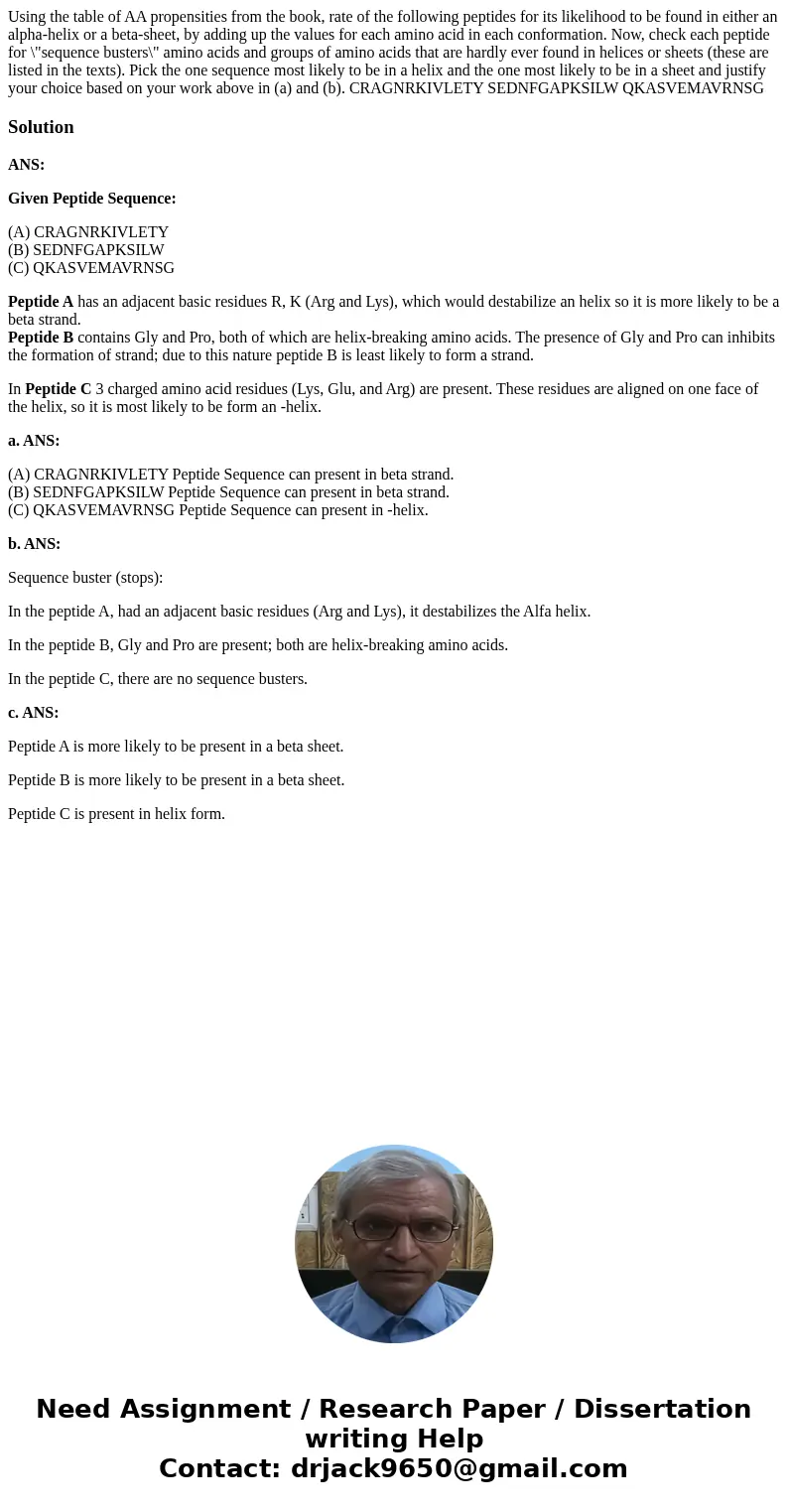Using the table of AA propensities from the book rate of the
Solution
ANS:
Given Peptide Sequence:
(A) CRAGNRKIVLETY
(B) SEDNFGAPKSILW
(C) QKASVEMAVRNSG
Peptide A has an adjacent basic residues R, K (Arg and Lys), which would destabilize an helix so it is more likely to be a beta strand.
Peptide B contains Gly and Pro, both of which are helix-breaking amino acids. The presence of Gly and Pro can inhibits the formation of strand; due to this nature peptide B is least likely to form a strand.
In Peptide C 3 charged amino acid residues (Lys, Glu, and Arg) are present. These residues are aligned on one face of the helix, so it is most likely to be form an -helix.
a. ANS:
(A) CRAGNRKIVLETY Peptide Sequence can present in beta strand.
(B) SEDNFGAPKSILW Peptide Sequence can present in beta strand.
(C) QKASVEMAVRNSG Peptide Sequence can present in -helix.
b. ANS:
Sequence buster (stops):
In the peptide A, had an adjacent basic residues (Arg and Lys), it destabilizes the Alfa helix.
In the peptide B, Gly and Pro are present; both are helix-breaking amino acids.
In the peptide C, there are no sequence busters.
c. ANS:
Peptide A is more likely to be present in a beta sheet.
Peptide B is more likely to be present in a beta sheet.
Peptide C is present in helix form.

 Homework Sourse
Homework Sourse